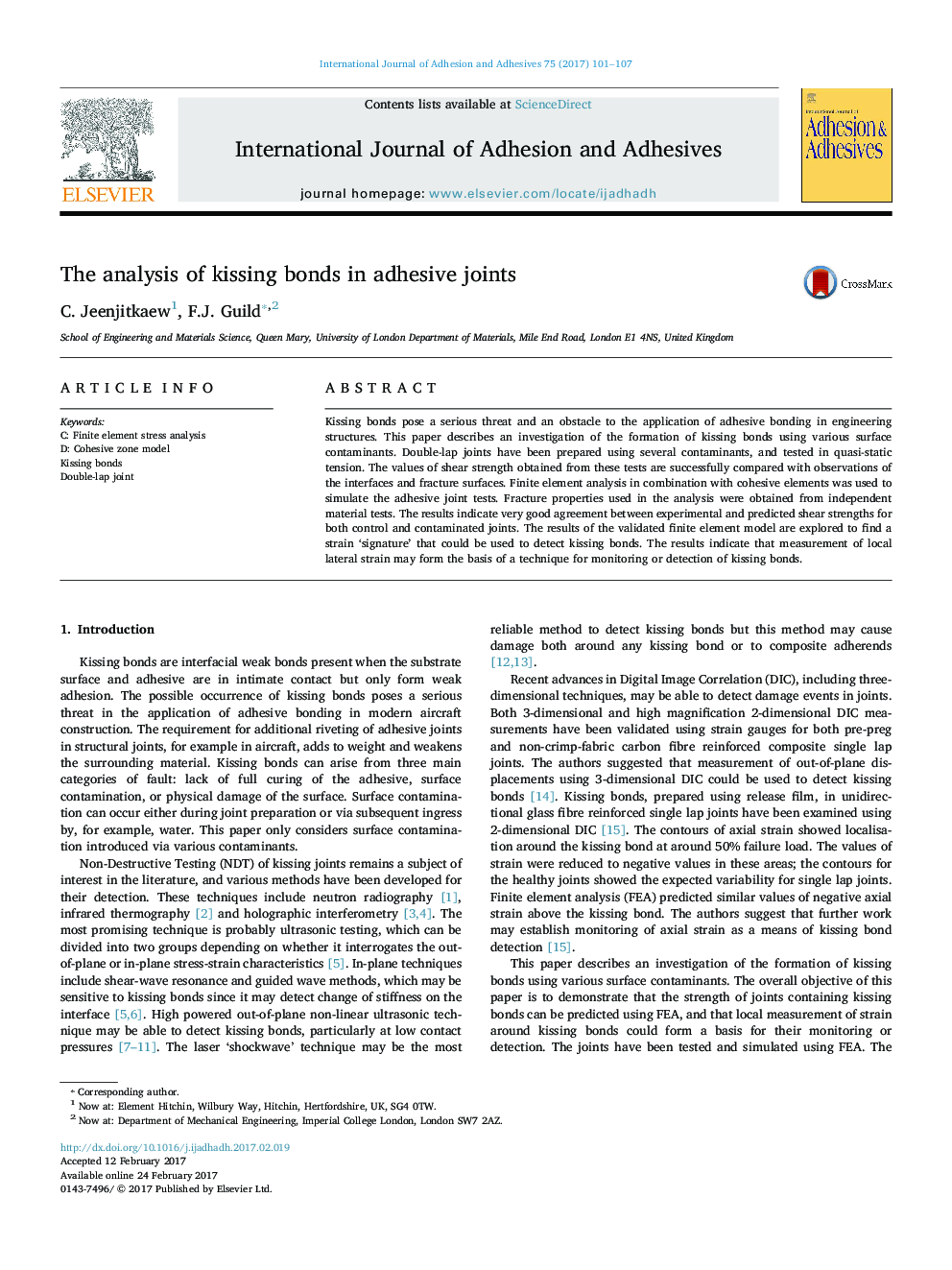| Article ID | Journal | Published Year | Pages | File Type |
|---|---|---|---|---|
| 5014820 | International Journal of Adhesion and Adhesives | 2017 | 7 Pages |
Abstract
Kissing bonds pose a serious threat and an obstacle to the application of adhesive bonding in engineering structures. This paper describes an investigation of the formation of kissing bonds using various surface contaminants. Double-lap joints have been prepared using several contaminants, and tested in quasi-static tension. The values of shear strength obtained from these tests are successfully compared with observations of the interfaces and fracture surfaces. Finite element analysis in combination with cohesive elements was used to simulate the adhesive joint tests. Fracture properties used in the analysis were obtained from independent material tests. The results indicate very good agreement between experimental and predicted shear strengths for both control and contaminated joints. The results of the validated finite element model are explored to find a strain 'signature' that could be used to detect kissing bonds. The results indicate that measurement of local lateral strain may form the basis of a technique for monitoring or detection of kissing bonds.
Keywords
Related Topics
Physical Sciences and Engineering
Engineering
Mechanical Engineering
Authors
C. Jeenjitkaew, F.J. Guild,
